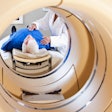Dear AuntMinnie Member,
SAN FRANCISCO - Despite a setback in 2008, colon cancer screening with CT colonography (also known as CTC or virtual colonoscopy) continues to edge toward Medicare payment, according to a talk on Monday at the International Symposium on Multidetector-Row CT (MDCT) by Dr. Judy Yee of the University of California, San Francisco.
Proponents of reimbursement for CTC screening have been working tirelessly to secure Medicare payment since the devastating setback seven years ago, when the U.S. Preventive Services Task Force (USPSTF) said there was "inadequate evidence" to support federal payments for individuals 50 years and older.
The situation is coming to a head now, with USPSTF completing its review of the evidence behind CTC screening in light of new studies; it's believed the task force will complete its re-evaluation this summer. Learn more by clicking here for an article from International Editor Eric Barnes.
In another presentation at MDCT 2015, Cynthia McCollough, PhD, of the Mayo Clinic in Rochester, MN, discussed three ways you can optimize and standardize your CT scanning protocols to reduce radiation dose. Her talk is based on Mayo's recent experience as it expanded its health system to include nearly 60 CT scanners at more than 13 locations, many using different protocols for similar tasks. Find out how Mayo brought order to the chaos by clicking here.
If you couldn't make it to San Francisco but you'd still like to witness the latest in CT research as it's presented, you can follow along with our livestream of the MDCT 2015 proceedings at isct.auntminnie.com.
SNMMI's Image of the Year
Across the North American continent, another major conference is also taking place: the Society of Nuclear Medicine and Molecular Imaging (SNMMI) 2015 annual meeting. Attendees in Baltimore are enjoying a wide range of presentations covering the latest research in nuclear medicine and molecular imaging.
Yesterday SNMMI released its Image of the Year award, given every year to the image that best exemplifies the cutting edge of molecular imaging. This year the award went to researchers from Germany for a PET image they acquired using a radiotracer that can be modified for either diagnostic or therapeutic applications in prostate cancer.
The radiotracer uses a prostate-specific membrane antigen inhibitor to bind to the surface of prostate cancer cells -- even if they have metastasized to other organs. The tracer can be labeled with gallium-68 for diagnostic applications or lutetium-177 for therapeutic use. Learn more by clicking here for a story by Features Editor Wayne Forrest.
In other SNMMI 2015 developments, click here to learn how researchers from Washington University in St. Louis used PET/MRI with F-18 fluorodopa to evaluate the efficacy of the angiogenesis inhibitor bevacizumab, and click here to find out how a team from the University of California, Los Angeles demonstrated the value of an amyloid PET scan performed after an inconclusive scan with FDG-PET.




















